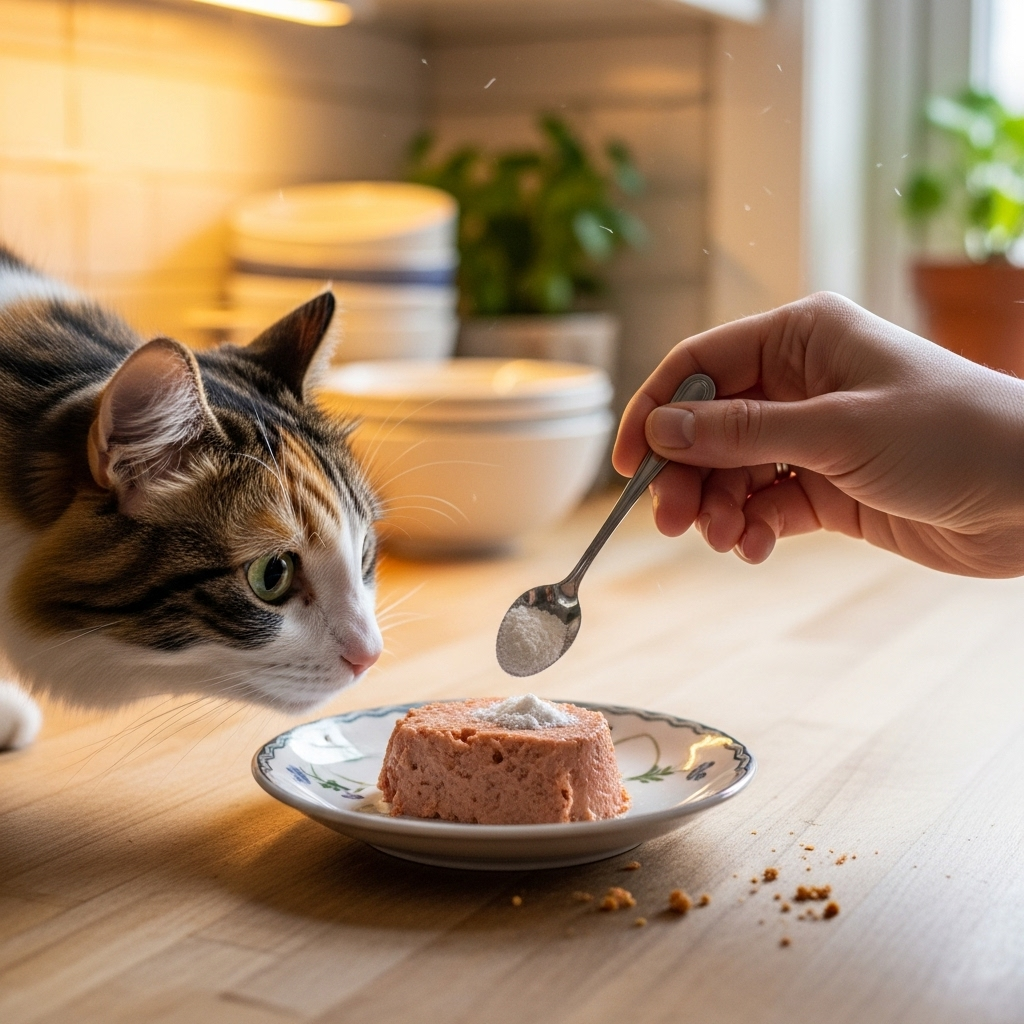How to Give Probiotics to Picky Cats (Wet Food Hacks)

Giving probiotics to a picky cat can feel like a balancing act: you want the health benefits, but your cat rejects anything that changes the smell, texture, or taste of their food. This guide focuses on practical, gentle techniques to mix probiotics with wet food so more cats will willingly eat them. It covers product types, step-by-step mixing tips, how to introduce probiotics safely, and what to monitor. Always consult your veterinarian before starting any supplement.
Why consider probiotics for your cat?
Probiotics are live microorganisms intended to support a healthy gut microbiome. Cat owners use probiotics to help with occasional diarrhea, to support digestion after antibiotics, or to generally support intestinal health. Not every cat needs a probiotic—your veterinarian can help determine whether it’s useful for your cat’s specific health situation.
Choose the right probiotic product
Products come in powders, capsules, paste, chewables, and freeze-dried forms. For picky cats who eat wet food, powders and freeze-dried probiotics are usually the easiest to mix in because they blend into the food and can be rehydrated.
What to look for
- Cat-specific or veterinary-formulated products when possible. These are chosen for pet-safe strains and dosing.
- Clear storage and expiration instructions—probiotic viability drops over time and with heat/humidity.
- CFU counts on the label (colony-forming units); more isn’t always better, but some indication is helpful.
- Strain information—Lactobacillus, Bifidobacterium, and Enterococcus are commonly used strains; your vet can advise on strain suitability for your cat.
- Avoid human products unless your vet approves—some human strains and carriers (xylitol, sweeteners) are unsafe for cats.
Practical tips for mixing probiotics with wet food
Below are step-by-step tips aimed at increasing acceptance among picky eaters.
1. Start with a very small amount
Instead of mixing probiotics into a full bowl, use a teaspoon-sized portion of wet food and mix the probiotic into that. When the cat eats the small portion entirely, gradually increase the portion size over several days. This reduces waste and helps build acceptance.
2. Use strong-smelling, favorite wet foods
Picky cats often respond to aroma. Mix the probiotic into a small amount of a highly palatable, smelly wet food (fish or poultry flavors your cat loves) to mask any change in smell or texture.
3. Rehydrate freeze-dried products before mixing
Freeze-dried probiotics can be reconstituted with a little warm (not hot) water or a bit of tuna/chicken broth (unsalted, no onion/garlic). Let it bloom for a minute, then stir into the food—this can reduce graininess that picky cats reject.
4. Crush capsules or sprinkle powder finely
If the probiotic is in a capsule, open it and mix the powder thoroughly into the wet food. Work quickly and mix thoroughly to avoid clumps that your cat might detect and dislike.
5. Warm the food slightly to boost aroma
Warming a small serving to near body temperature (briefly in a warm water bath or microwave for a few seconds—check temperature) can increase aroma and palatability. Never serve hot.
6. Offer the probiotic mixture separately
If your cat eats multiple meals or free-feeds, try offering the probiotic-mixed portion in a separate bowl. This encourages the cat to consume the medicated portion first, before returning to plain food.
7. Use positive reinforcement and patience
Praise calmly and offer a little play or petting after the cat eats the portion. Avoid forcing or coaxing aggressively—stress can cause food aversions.
How to introduce probiotics safely
- Check with your veterinarian—especially for kittens, older cats, sick or immunocompromised cats, or those on medication.
- Follow the product label for dose and frequency.
- Begin with a smaller-than-recommended dose mixed into a tiny portion of favorite wet food for 2–3 days, then increase to the full recommended dose if well tolerated.
- Watch for digestive changes—mild gas or soft stool can occur initially but should resolve in a few days. Stop and call your vet if you see severe diarrhea, vomiting, lethargy, or other concerning signs.
| Pros | Cons |
|---|---|
|
|
Storage and handling tips
- Store probiotics exactly as the label directs—many need refrigeration after opening.
- Avoid buying products with damaged packaging or past expiration.
- Keep doses dry and away from heat and humidity to preserve viable organisms.
When to call the vet
Stop the supplement and contact your veterinarian if your cat develops persistent vomiting, severe diarrhea, lethargy, decreased appetite, or any other worrying symptoms. Also consult your vet before giving probiotics to kittens less than 8 weeks old, cats with compromised immune systems, or cats on complex medical treatments.
FAQ
Q: Can I mix human probiotic powder into my cat’s wet food?
A: Not without veterinary approval. Some human products contain strains, carriers, or sweeteners that are unsafe for cats. Use products labeled for pets or approved by your vet.
Q: How long before I see results?
A: Some owners notice stool improvements within a few days, while others may take 2–4 weeks. It depends on the reason for use, the product, and the individual cat.
Q: My cat refuses the food after I mix probiotics—what should I do?
A: Try smaller portions, rehydrating freeze-dried products, warming slightly, or mixing into a different favorite wet food. If that fails, consult your vet for alternatives like probiotic pastes or vet-administered options.
Q: Can probiotics interfere with antibiotics?
A: Probiotics are often used alongside antibiotics to support gut flora, but timing and choice of product matter. Discuss with your vet—sometimes spacing doses a few hours apart is recommended.
Key Takeaways
- Choose cat-appropriate, high-quality probiotic products and follow your vet’s advice.
- Start small—mix probiotics into a tiny, highly palatable portion of wet food to build acceptance.
- Rehydrate freeze-dried probiotics and warm food slightly to boost aroma and texture.
- Monitor your cat for digestive changes and stop if serious symptoms occur.
- Store probiotics as directed to preserve effectiveness.
Tip: If you’re struggling, ask your vet about alternative delivery forms (pastes, oral syringes) or supervised administration to ensure your cat receives the full dose.
Disclaimer: This information is educational and not a substitute for professional veterinary advice. Always consult your veterinarian before starting or changing supplements, especially for kittens, elderly cats, pregnant or nursing cats, or cats with health conditions.

Leave a Reply